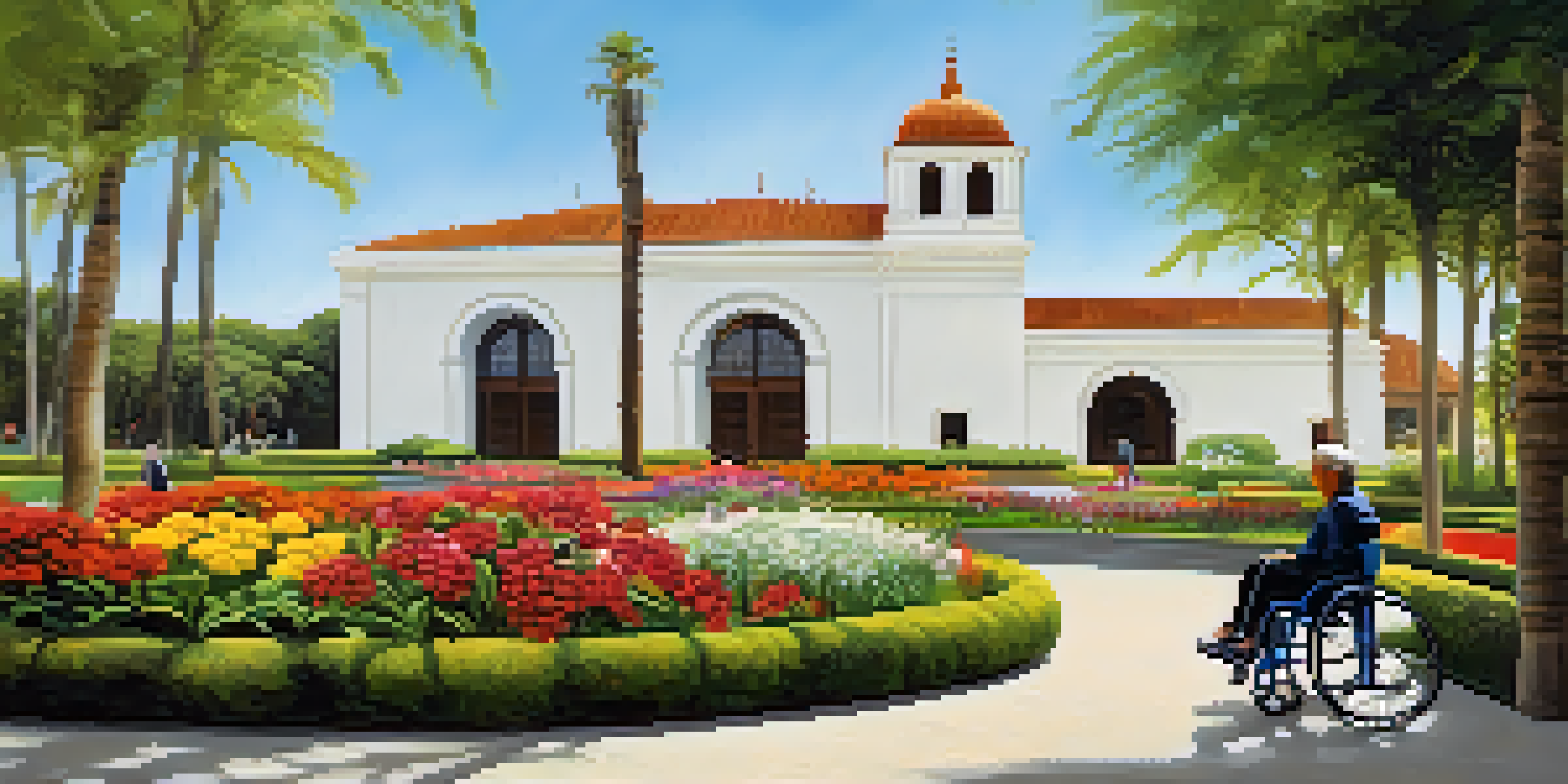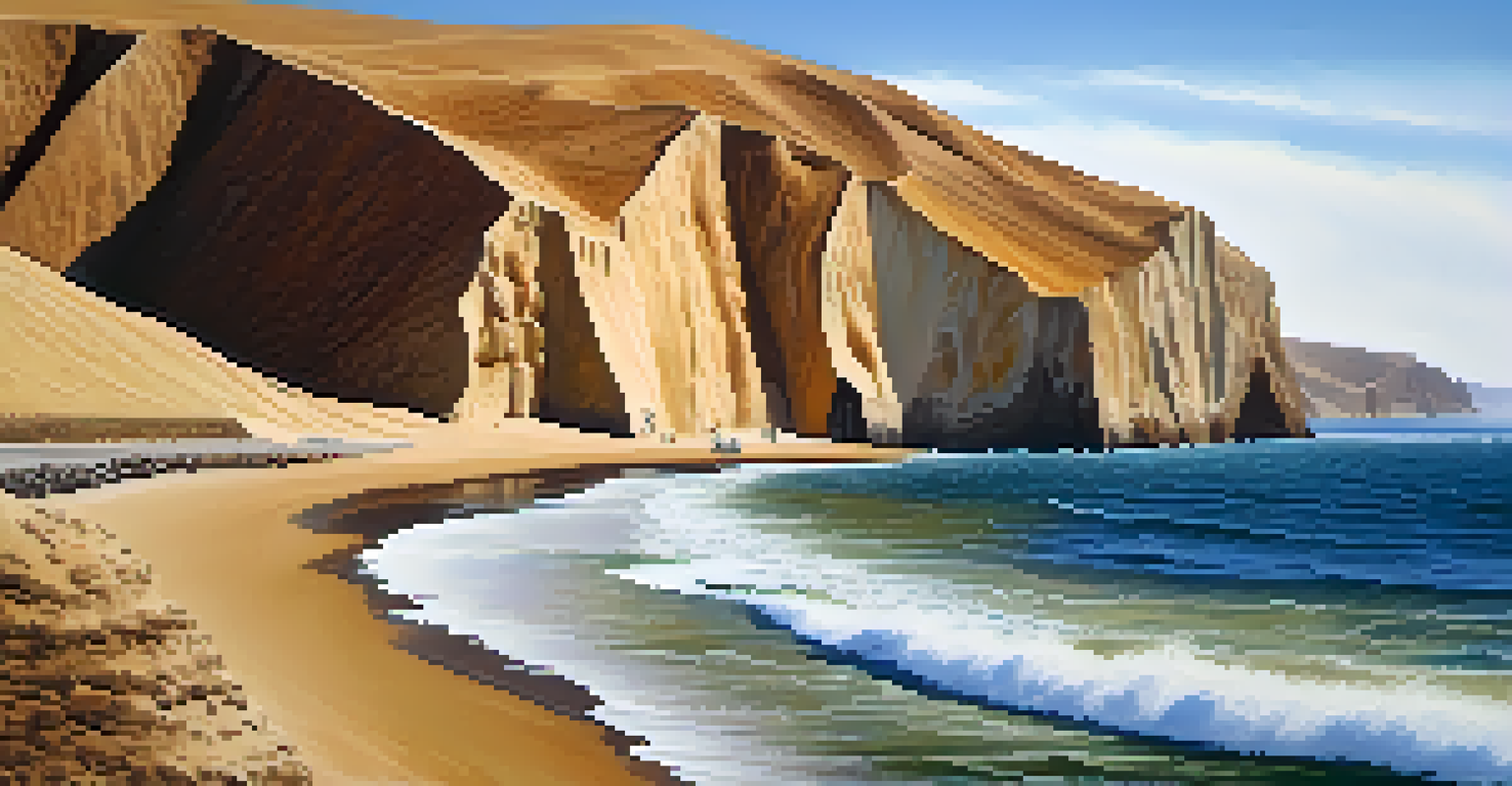Essential Guide to Accessible Travel in Peru for Everyone

Understanding Accessibility Needs for Travelers in Peru
Before embarking on your journey to Peru, it's essential to recognize the various accessibility needs travelers may have. This includes mobility impairments, visual and hearing disabilities, and cognitive challenges. By understanding these needs, you can better prepare for a trip that accommodates everyone, ensuring a more enjoyable experience.
Traveling – it leaves you speechless, then turns you into a storyteller.
Peru's landscapes, rich culture, and history can be enjoyed by all, but accessibility can vary greatly depending on the location. Major cities like Lima and Cusco have made strides in improving accessibility, but some remote areas may still present challenges. Researching your destinations in advance will help you navigate these differences effectively.
Traveling with accessibility in mind not only benefits individuals with disabilities but also enhances the travel experience for everyone. By advocating for inclusive travel options, you contribute to a more welcoming environment in the places you visit, encouraging local businesses to adopt more accessible practices.
Choosing Accessible Accommodations in Peru
Finding the right place to stay is crucial for an accessible travel experience. Look for hotels and accommodations that specifically advertise accessibility features such as ramps, elevators, and accessible restrooms. Major cities typically have a range of options, but it's wise to confirm these features directly with the establishment before booking.

Consider using online platforms that allow you to filter accommodations based on accessibility needs. These websites often provide reviews from fellow travelers who can give insights into their experiences. Additionally, reaching out to local tourism offices can help you identify recommended accessible lodgings.
Understand Accessibility Needs
Recognizing the accessibility needs of travelers in Peru ensures a more enjoyable experience for everyone.
Remember that accessibility can also extend to the surrounding environment. Choosing accommodations near attractions or public transportation can significantly enhance your experience, allowing for easier exploration of Peru’s breathtaking sites without unnecessary hurdles.
Transportation Options for Accessible Travel in Peru
Getting around in Peru can be a thrilling adventure, but it’s essential to consider the accessibility of your transportation options. In major cities, public transportation systems are gradually improving, with some buses equipped to accommodate wheelchairs. However, for more remote areas, it may be necessary to explore private transport options that cater specifically to accessibility needs.
The world is a book, and those who do not travel read only one page.
Taxis and rideshare services like Uber are available in urban centers, and many drivers are willing to assist with loading and unloading passengers. It's helpful to communicate your needs beforehand to ensure a smoother experience. Additionally, some companies offer accessible van rentals, giving you the freedom to explore at your own pace.
When planning excursions to popular attractions like Machu Picchu or the Sacred Valley, it's essential to research accessible routes and transport options. Some tour operators specialize in accessible travel, providing tailored experiences that include transportation, guides, and accommodations that meet your specific needs.
Exploring Peru's Major Cities with Accessibility in Mind
Lima, the bustling capital of Peru, is a great starting point for accessible travel. The city has made significant improvements in accessibility, with wheelchair-friendly attractions like the Larco Museum and Parque Kennedy. It’s advisable to plan your itinerary around these accessible spots to maximize your experience while navigating the city.
Cusco, known for its stunning architecture and rich history, is also working towards better accessibility. Although the city's cobblestone streets may pose a challenge, many attractions, such as the Plaza de Armas, are becoming more accessible. Be sure to check for local tours that cater to accessible travel, as they can provide invaluable assistance and knowledge.
Choose Accessible Accommodations
Selecting hotels and lodgings with proper accessibility features is crucial for a smooth travel experience.
In Arequipa, the White City, you’ll find beautiful colonial buildings and scenic views. While exploring, look for accessible routes and attractions, like the Santa Catalina Monastery, which has made strides in improving visitor accessibility. Engaging with local guides who understand your needs can enhance your experience and provide a more in-depth understanding of these vibrant cities.
Experiencing Nature Safely and Accessibly in Peru
Peru is renowned for its breathtaking natural beauty, from the Amazon rainforest to the Andes mountains. When planning to explore these stunning landscapes, it’s important to research accessible trails and parks. Some national parks have made efforts to improve accessibility, offering well-maintained paths and facilities for wheelchair users and those with mobility challenges.
For example, the Paracas National Reserve has accessible viewpoints that allow you to take in the stunning coastal scenery without extensive hiking. Similarly, the Colca Canyon has tour operators that provide accessible options for viewing the majestic condors. Consider engaging with local organizations focused on accessible travel to find the best places to experience nature.
Remember that even in natural settings, safety is paramount. Always prioritize your comfort and well-being while engaging with the great outdoors. Whether it's choosing appropriate gear or traveling with companions who can assist you, taking these precautions will ensure a memorable experience in Peru's beautiful landscapes.
Cultural Experiences: Accessible Activities in Peru
Peru is rich in culture, and there are numerous accessible activities that allow travelers to immerse themselves in this vibrant heritage. Many cultural centers and museums, such as the Museum of the Nation in Lima, are designed with accessibility in mind, offering ramps, guided tours, and tactile exhibits for those with visual impairments.
Participating in local workshops, such as cooking classes or artisan crafts, can also be adapted for accessibility. Look for classes that cater to different needs, ensuring that everyone can engage and learn. Many local businesses are eager to accommodate travelers, so don’t hesitate to ask about specific arrangements.
Explore Accessible Cultural Activities
Engaging in accessible cultural activities allows travelers to immerse themselves in Peru's rich heritage.
Attending cultural festivals and events is another fantastic way to experience Peru's diversity. Many outdoor events, such as the Inti Raymi Festival, have accessible viewing areas and facilities. Engaging with local communities not only enriches your travel experience but also encourages inclusivity and awareness of accessibility in cultural celebrations.
Resources and Support for Accessible Travel in Peru
As you plan your trip to Peru, having the right resources can make all the difference. Websites dedicated to accessible travel often provide valuable insights, tips, and directories of accessible services across the country. Utilizing these resources can help you identify accommodations, transportation, and activities that meet your needs.
Local tourism offices can also be a great support system, as they typically have information on accessibility initiatives and can guide you to accessible attractions and services. Engaging with local disability advocacy organizations can provide additional insights and recommendations tailored to your specific requirements.

Lastly, connecting with fellow travelers through online forums and social media groups focused on accessible travel can yield helpful advice and personal experiences. Sharing your own journey can inspire others while fostering a supportive community for accessible travelers in Peru and beyond.